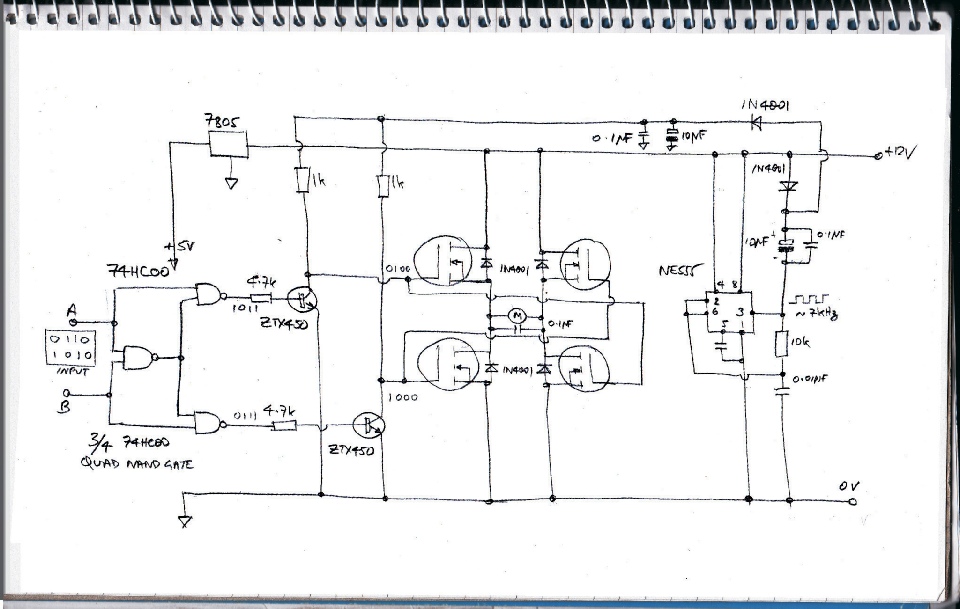 Home
Home



This circuit is needed to control the door locking motors. Since the doors have to lock and unlock the polarity of the supply needs to reverse. The circuit uses 4 mosfets to achieve this. The mosfets tun on in pairs “across the diagonal” so to speak to pass current through the motors in either direction. This could also be achieved with two relays (and a couple of relay drivers -
The mosfets need an over-
(I think a suitably low value fuse is essential here (say 10 amps) because there are quite a few failure modes which can lead to the worst case all four mosfets on.)
H-
